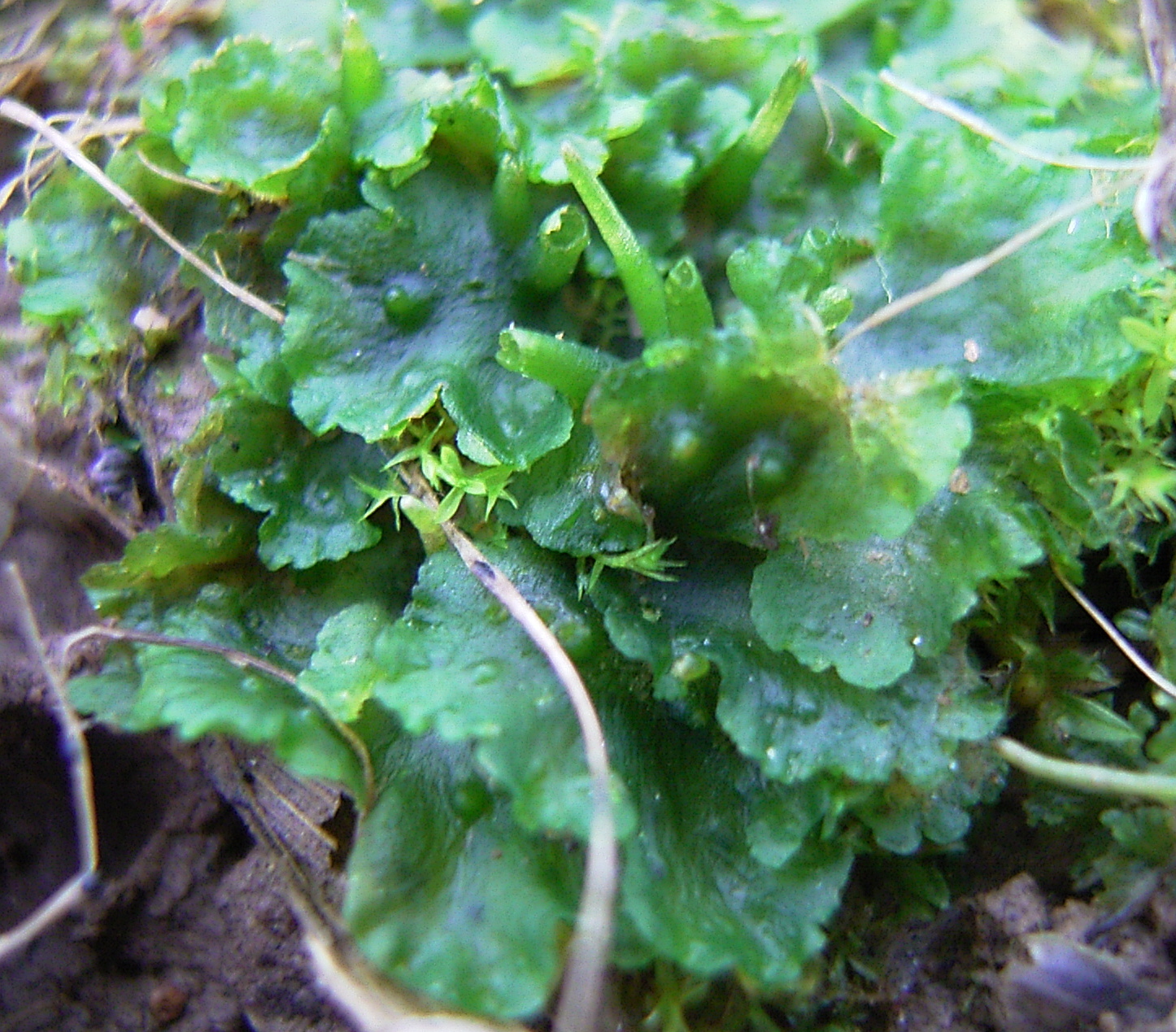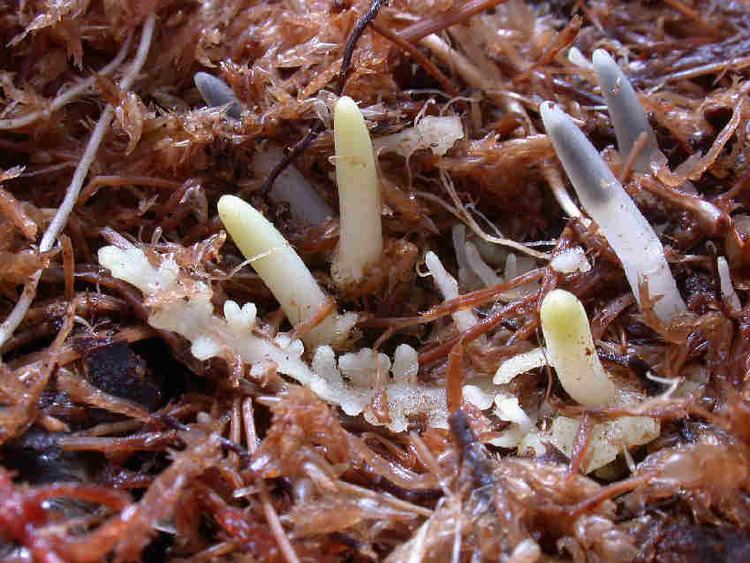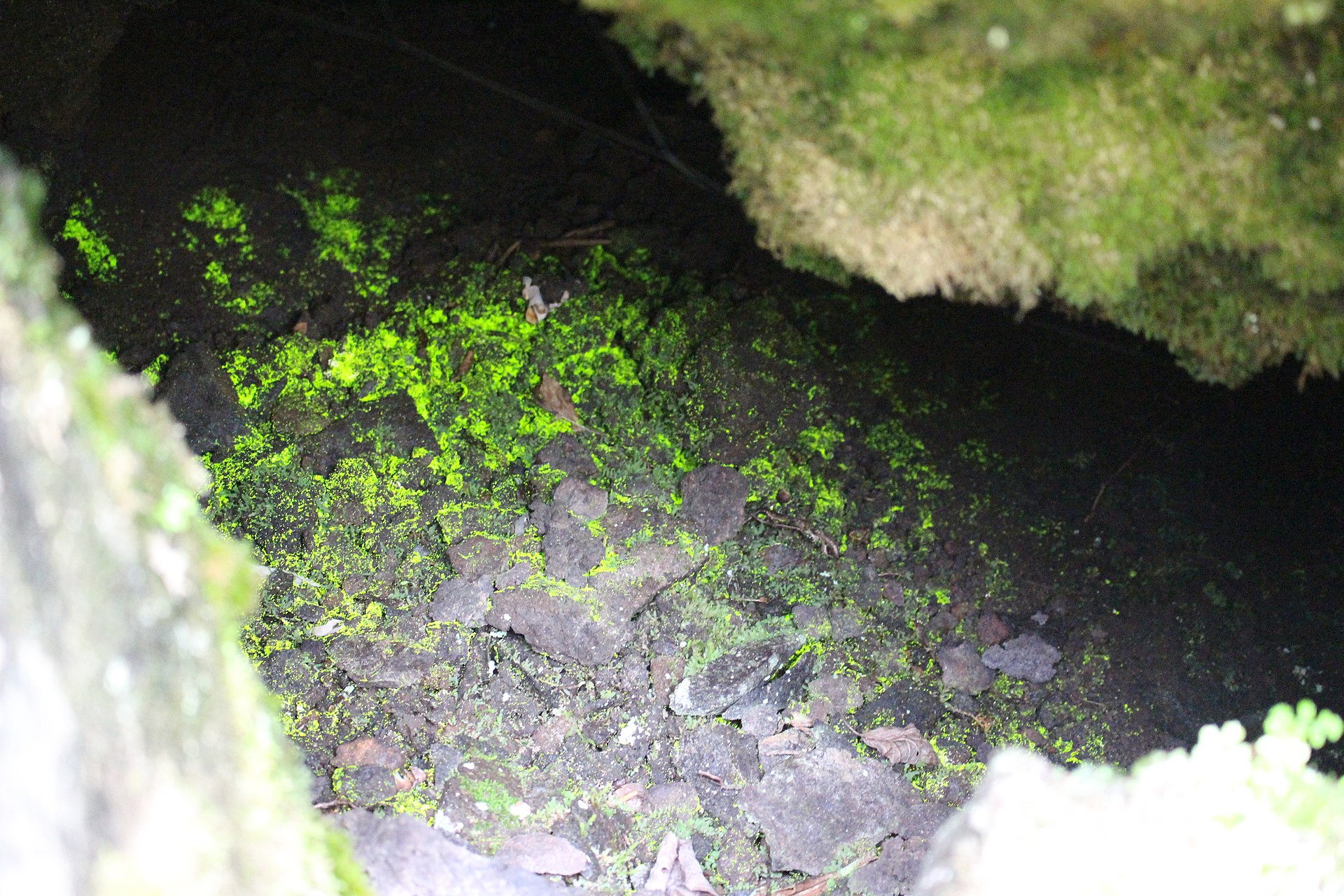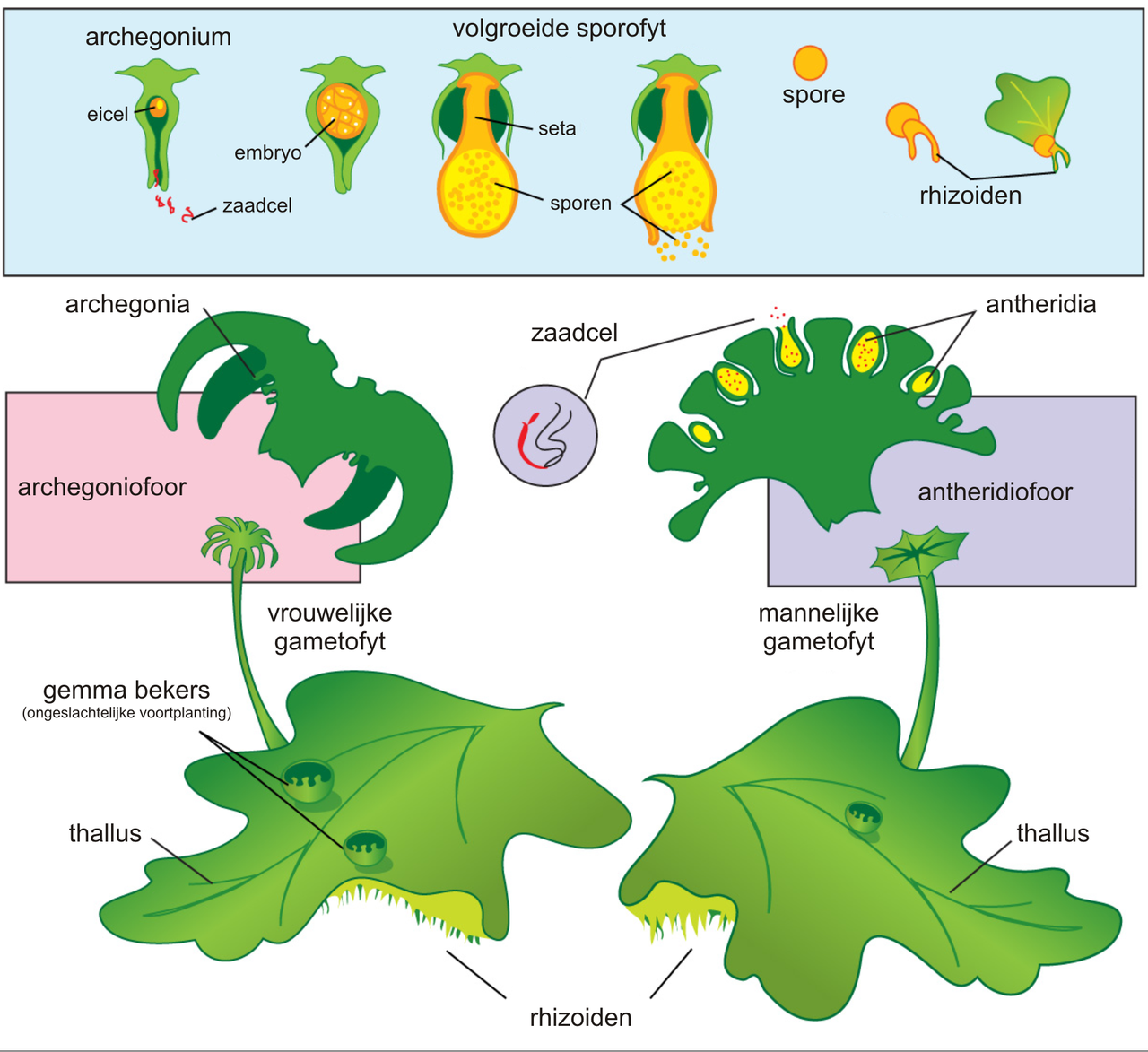Bryophytes - An Introduction
Hornworts, Liverworts, and Mosses
These three groups of plants differ from other land plants (Embryophyta) in that they are non-vascular (they don't have the vascular system consisting of xylem and phloem), and thus have been put into an artificial group, Bryophyta.
Bryophyte Sex - The Alteration of Generations
Another feature that makes them different is that their life cycle is strongly dominated by the gametophyte stage - a haploid part of the life cycle, where cells only carry one set of chromosomes. Gametophytes produce haploid sperm and eggs in gametangia (gamete-carrying organs). Water is always needed for their sperm to swim from the male sex organ, antheridium, into the female sex organ, archegonium. The sex cells fuse to form a zygote, which develops into a sporophyte embryo inside the archegonium. This is the start of the very short diploid stage (sporophyte, with cells carrying two sets of chromosomes). The adult sporophyte is still nutritionally dependent on the gametophyte and thus remains attached to it all the time.
Also, it is always unbranched (unlike in vascular plants, where it forms the entire body except the pollen and embryo sac). The sporophyte then produces haploid spores by meiosis in a capsule called sporangium. The spores are mostly dispersed by wind. If they land in a suitable environment, they further develop into the gametophyte.
In other words, the gametophyte is the green, leaf-like part of the plant, while the sporophyte is a tiny little bit hooked inside the female organ.
This whole complicated thing is called the alteration of generations. It started in algae (where both stages look pretty much similar) but, believe it or not, all higher plants must thank these weird little guys for perfecting it, because this is what formed the evolutionary basis for all the other plants that now occupy the land (and water).
Bryophyte Ecology
Mosses (Bryophyta), are possibly the ones you are most familiar with. There at least 12,500 species of them. Liverworts (Marchantiophyta) exist in about 5,000 to 8,000 kinds of ecological forms and hornworts (Anthocerotophyta) are the least diverse group, with about 300 species that we currently know of. Let's have a look at their ecology.
Hornworts are the least diverse bryophytes.
Their common name comes from the horned shape of their sporophyte. Certain features make hornworts truly special.
Their cells only have one large chloroplast and a pyrenoid that manufactures and stores nutrients. This is usual in algae, but unusual in other land plants.
The underside of their body may have mucilage-filled cavities that are invaded by cyanobacteria, mostly of the genus Nostoc. These photosyntetic prokaryotes are symbiotic, as they bind nitrogen. Their sporophyte has an interesting feature: pseudoelaters that are associated with spores. Unlike the elaters of liverworts, pseudoelaters are multi-cellular (1-4) and have helical thickenings (elaters have spiral thickenings).
As they dry out, they change shape (they are hygroscopic). When they do, they twist, which then aids spore dispersal.
Liverworts are a diverse group. They can be either leafy or they can grow as a flattened and leafless plant body (thallus). This is, however, not a taxonomic sign - flattened leafless liverworts with a multilayered thallus may be found in one class, Marchantiopsida, but the class Jungermanniopsida consists of both leafy and flattened leafless liverworts, just as the Haplomitriopsida class does, with the most primitive species of liverworts.
Jungermanniopsida is the largest of the three classes, and you can find various examples of interesting species in it. There is one, for example, that lacks any photosynthetic pigment - it is achlorophyllous (lacking chlorophyll). This species is called the ghostwort (Cryptothallus mirabilis).
How does a plant that does not photosynthesize survive? It's a parasite! Actually, with another species found in Costa Rica, C. hirsutus, they're the only known heterotrophic non-vascular embryophytes! It takes nutrients from fungi of the genus Tulasnella. It seems that this heterotrophy of this species evolved from a symbiotic relationship of its ancestral species with fungi.
It seems that their genus, however, is disposable. As it looks that these plants belong to the genus Aneura.
If you ever see a single ghostwort reaching about 3 cm, you can be sure it is a female plant. Why yes, C. mirabilis is what we call a dioicous species, and male plants can be 10 times smaller than the female plants!
Last but not least, we're going to talk a little bit about mosses, the second most diverse group of extant plants after angiosperms. Actually, we'll focus on a single species which is rather extraordinary.
Mosses are home to many microorganisms - tardigrades, for instance - and can hold in great amounts of water. There is no doubt mosses are one of the most important non-vascular plants in terrestrial environments.
Schistostega pennata, however, is a very peculiar species. It is commonly named dragon's or goblin gold, luminous or luminescent moss. I believe you guessed why.
S. pennata appears to be glowing in dark places. That is because its protonema (the earliest stage of the gametophyte) has clear, spherical cells that collect light just like lenses. Chloroplasts, then, thanks to the photosynthetic pigment, chlorophyll, give off the greenish glow you can see in the picture. It's like looking into a cat's eyes when it gets dark.
You can find it growing on damp mineral soils, burrow entrances or overturned tree roots in northern Eurasia and North America. It has a Holoarctic distribution.
It may be easily out-competed in areas with more light, but goblin gold is more than just shiny. Its protonemata have a sticky surface which allows them to stabilize surfaces on which they grow. It is as if it was building bridges between different pieces of soil, thus creating its own habitat.
You see, the tiniest organisms are often the most astonishing.

Photo credit: Oliver s.
| Common name: | Smooth hornwort |
| Scientific name: | Phaeoceros laevis |
| Division: | Anthocerotophyta |
| Class: | Anthocerotopsida |
| Order: | Notothyladales |
| Family: | Notothyladaceae |
| Scientific reading: |

Photo credit: Brian Eversham
via In Defense of Plants
| Common name: | Ghostwort |
| Scientific name: | Cryptothallus mirabilis |
| Division: | Marchantiophyta |
| Class: | Jungermanniopsida |
| Order: | Metzgeriales |
| Family: | Aneuraceae |
| Scientific reading: |

Photo credit: Tentsukutsu
| Common name: | Goblin gold |
| Scientific name: | Schistostega pennata |
| Division: | Bryophyta |
| Class: | Bryopsida |
| Order: | Dicranales |
| Family: | Schistostegaceae |
| Scientific reading: |
